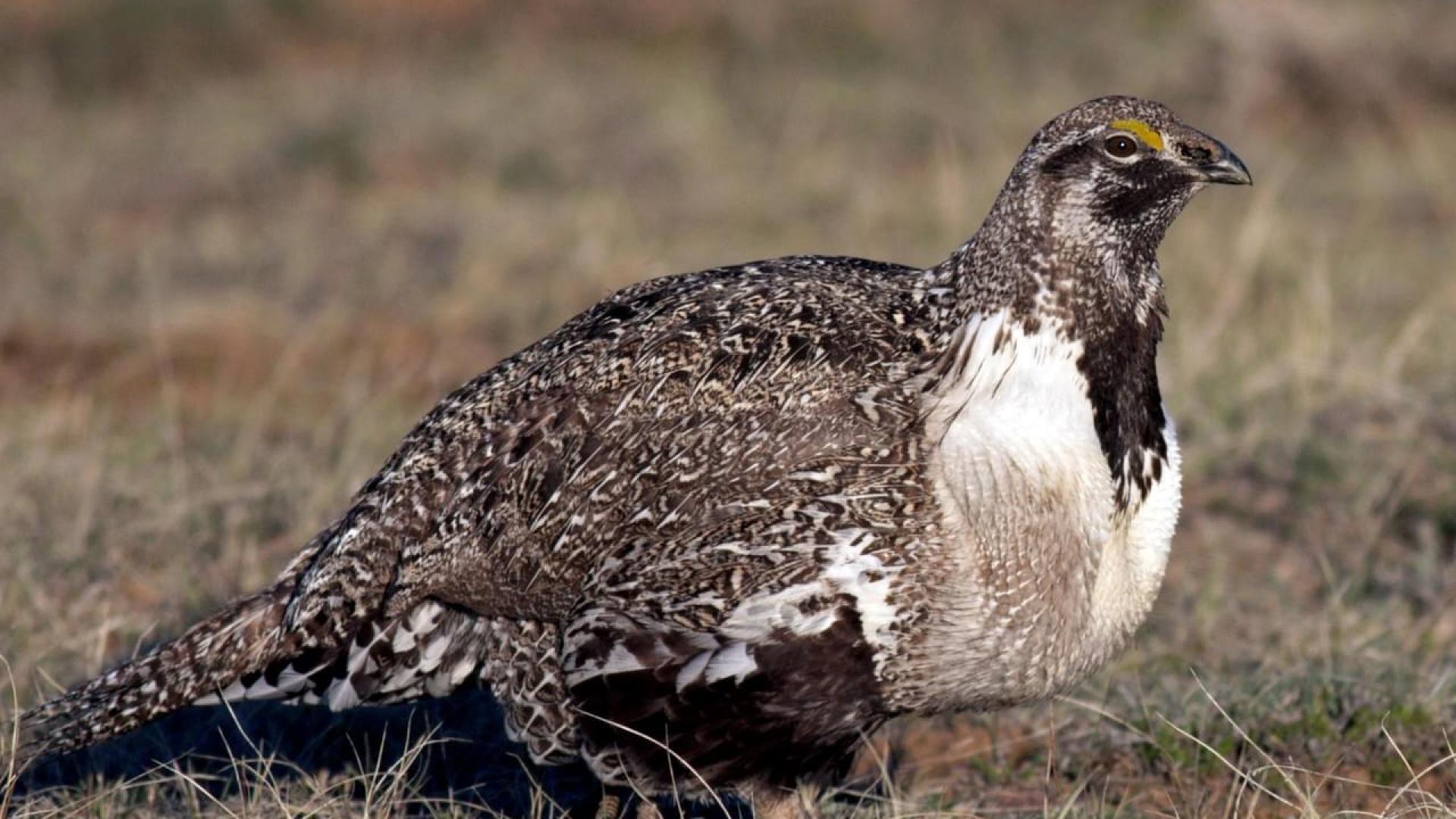
- Body
By Beth Burritt, Utah State University
Greater sage-grouse (Centrocercus urophasianus) is the largest of all grouse species in North America. Adult males can reach weights exceeding 7 pounds and wing spans of 2½ feet. Females (hens) are about half that size. Sage-grouse are relatively long-lived and can often live 5 or more years after reaching adulthood. Sage-grouse are dependent on sagebrush communities for food and cover. They are referred to as a landscape species and migrate to different areas throughout the year. Sage-grouse typically need large, intact sagebrush landscapes to maintain sustainable populations. Spring is the mating season for sage-grouse as birds gather in an open area called a lek. Most leks are traditional sites used year after year. Early in the morning, several males try to attract females by performing an elaborate strutting display and by making “popping/bubbling” sounds with their inflatable air sacs. Hens will then choose which male they prefer. After breeding, hens build a nest usually within a few miles of a lek. A typical nest would contain six to eight eggs. After the chicks are hatched, they are dependent on insects and forbs to provide a nutritious diet. When the chicks are a few weeks old, the hen will move them to better habitat for late summer. As winter approaches, sage-grouse move to areas where sagebrush grows above the snow line to provide shelter and food.
Featured Resources From the Database
- Website
The Sage Grouse Initiative (SGI) is a partnership of ranchers, agencies, universities, non-profit groups, and businesses that embrace a common vision: wildlife conservation through…
- Website
Abbreviated discussion provides key points for a basic understanding of the species and its habitats.
- Website
The greater sage-grouse is a species in declineacross the western United States, including Idaho. As
implied by the name, greater sage-grouse depend onsagebrush dominated… - Website
The loss and fragmentation of sagebrush (Artemisia spp.) landscapes in the West has caused the decline of sagegrouse
(Centrocercus spp.) range-wide. The grouse depend on…